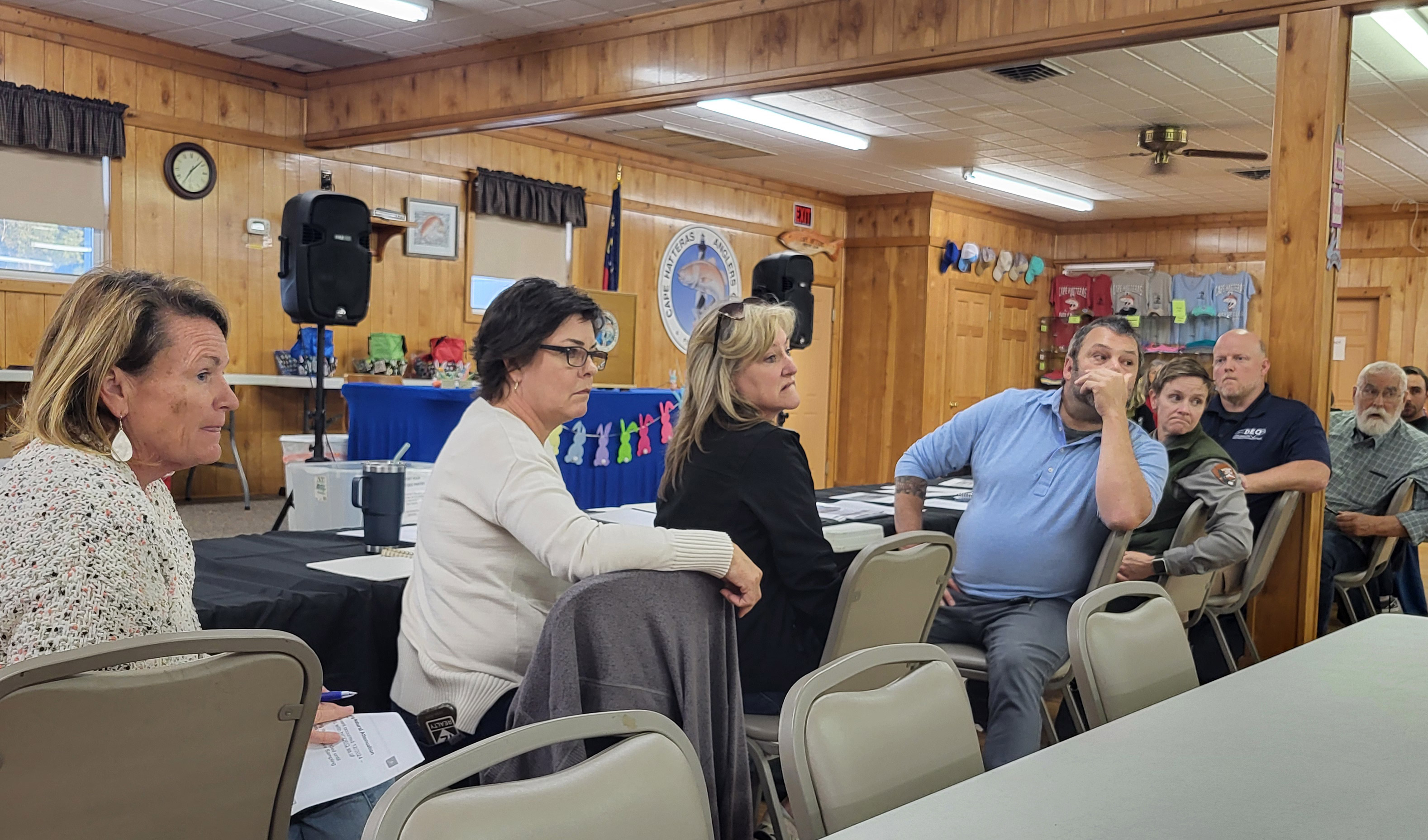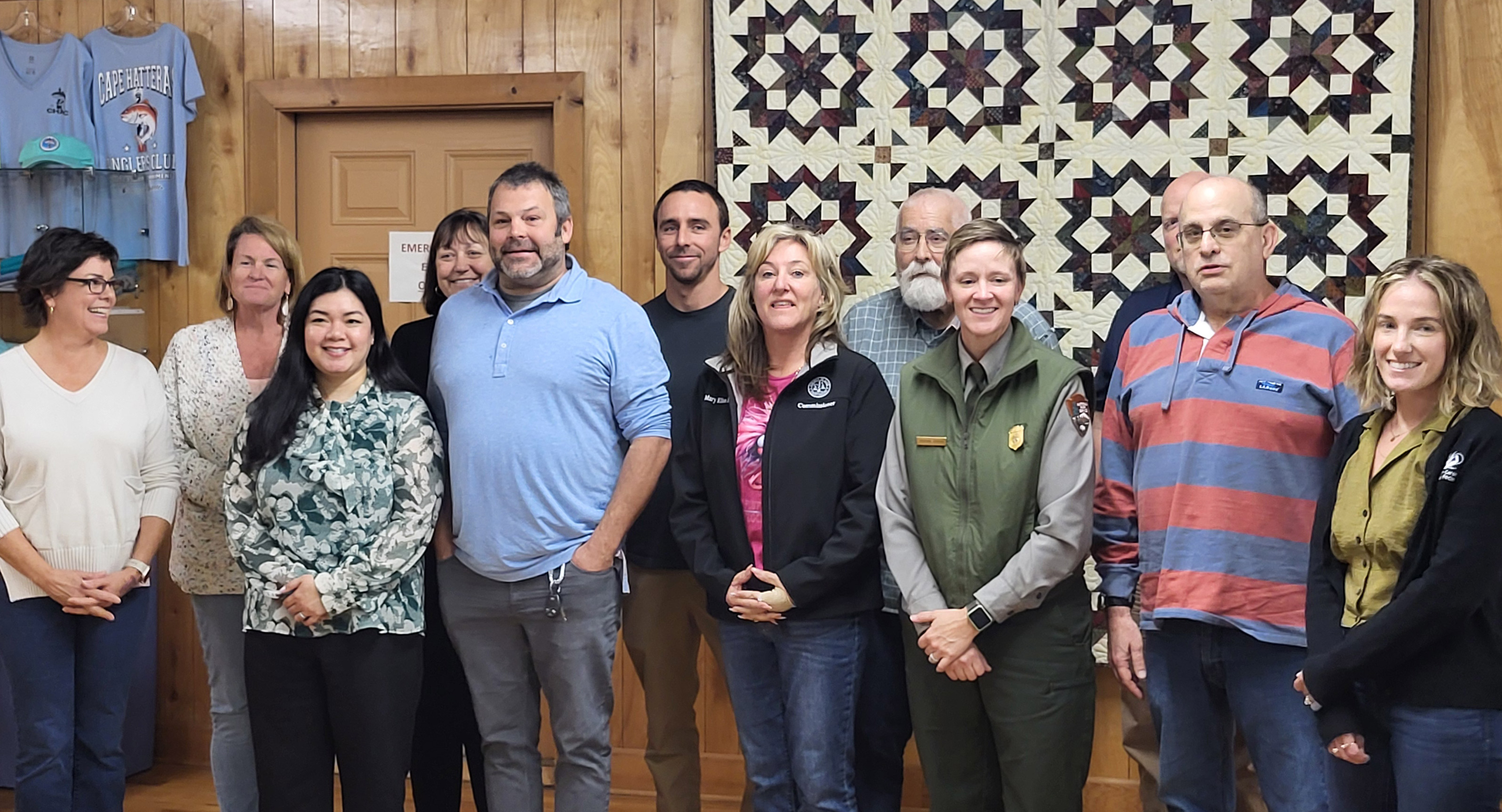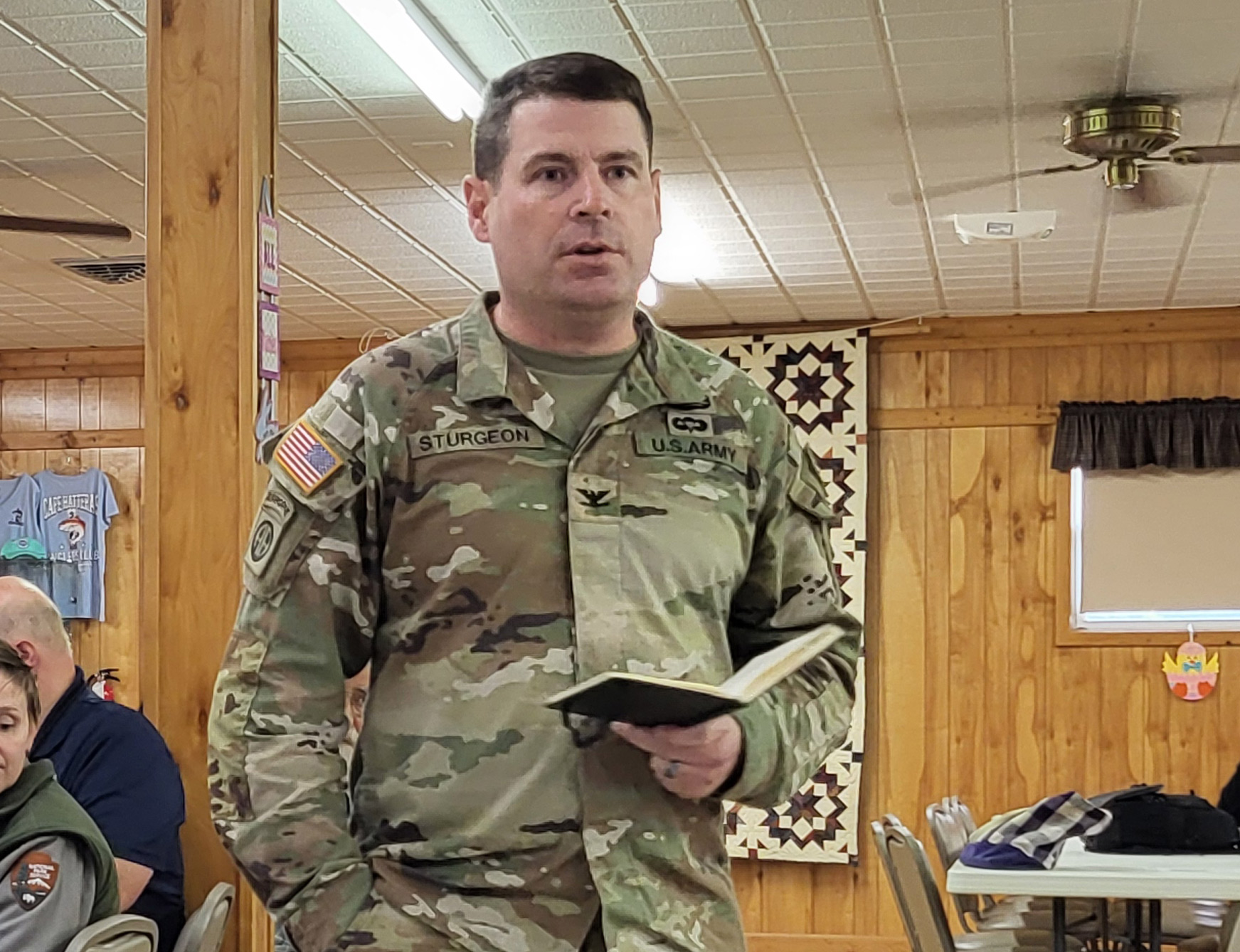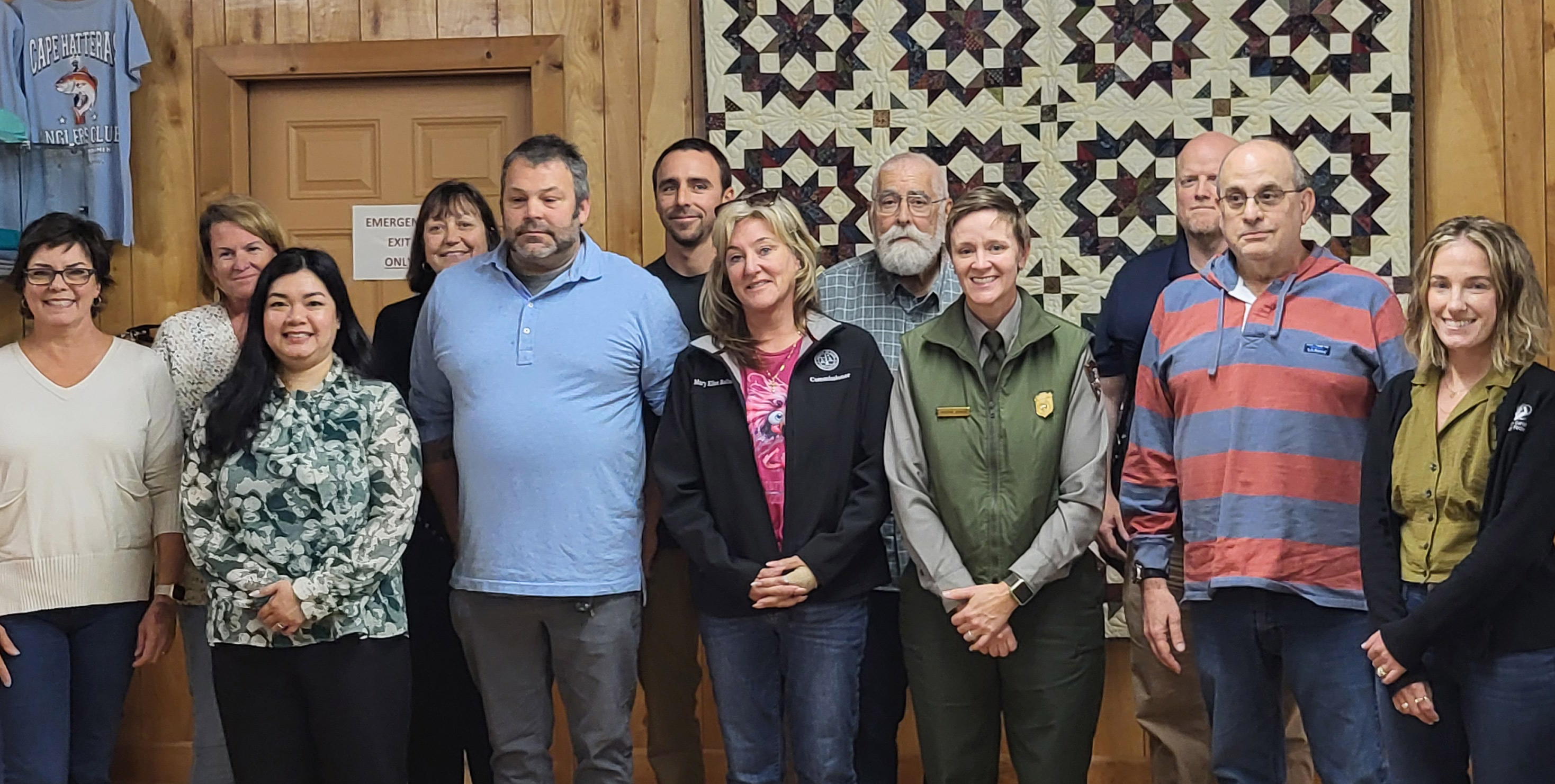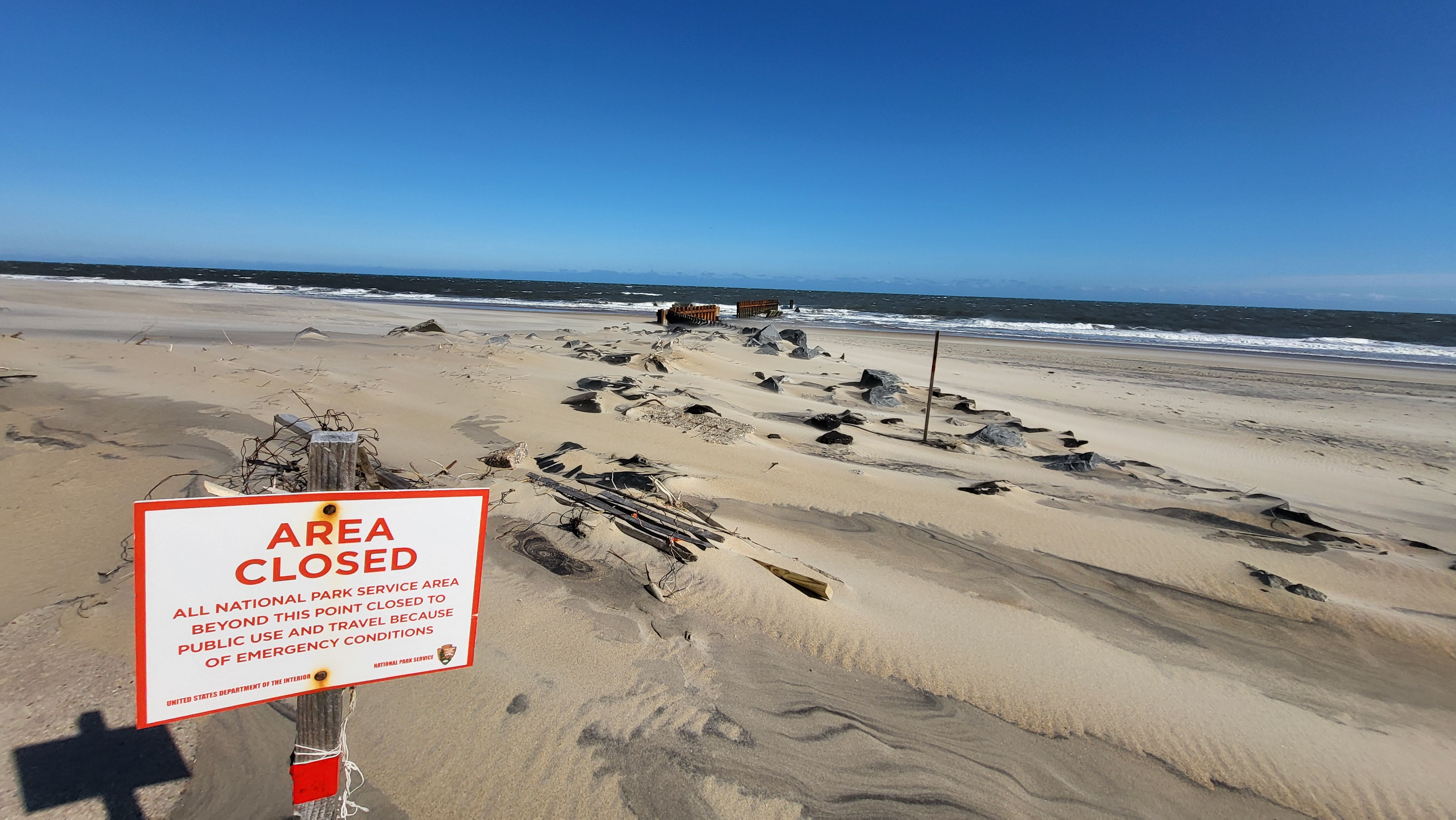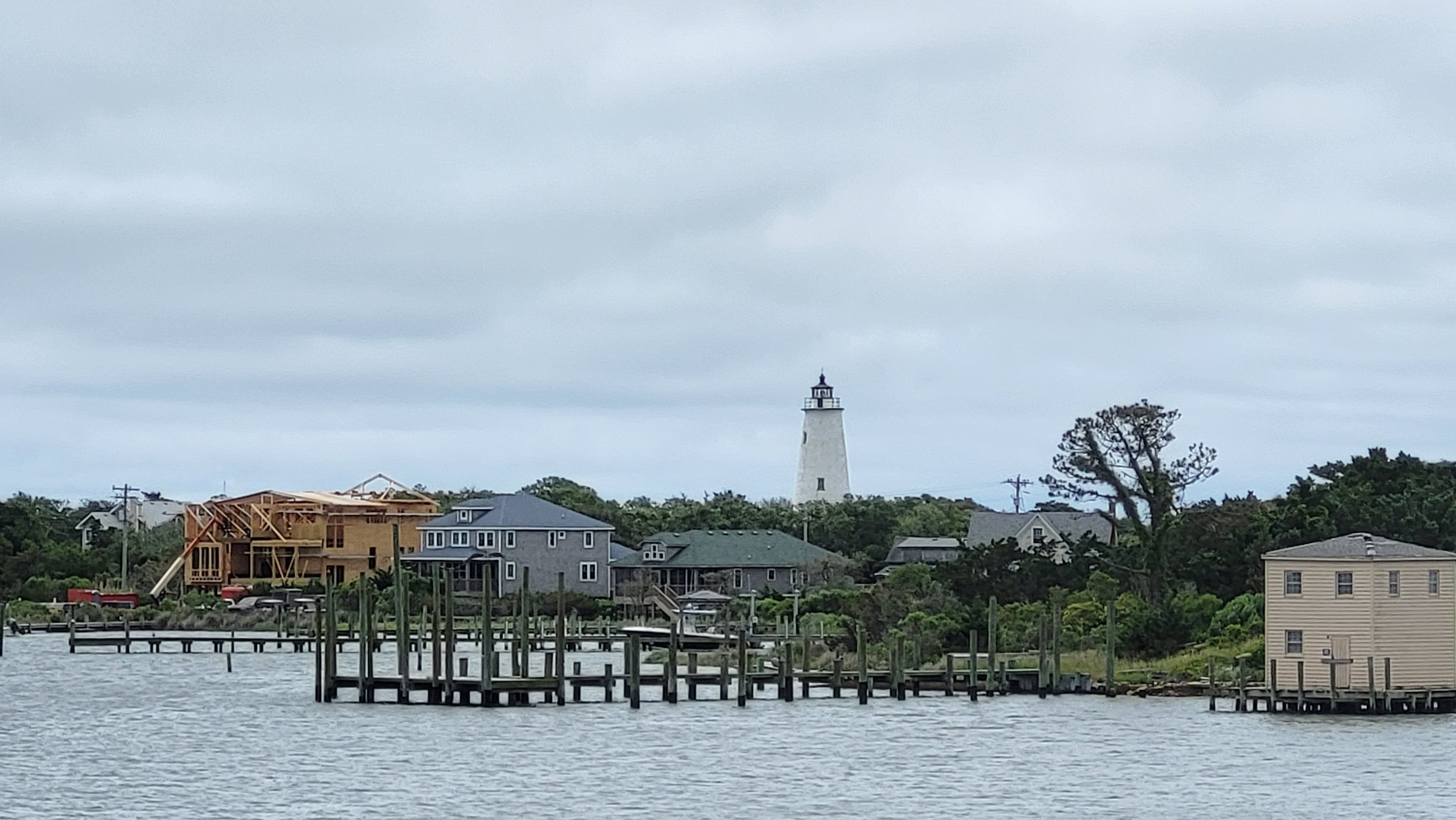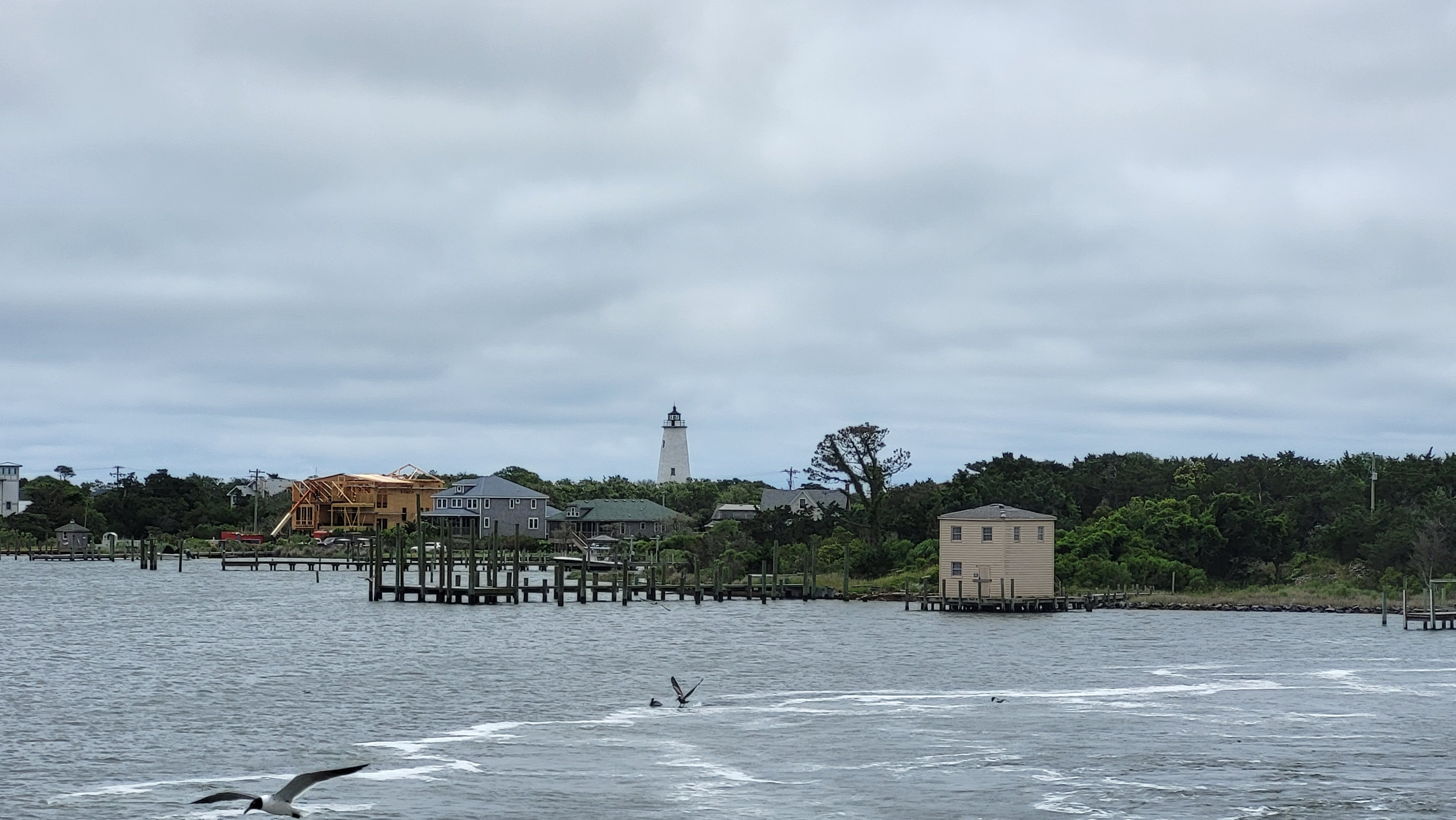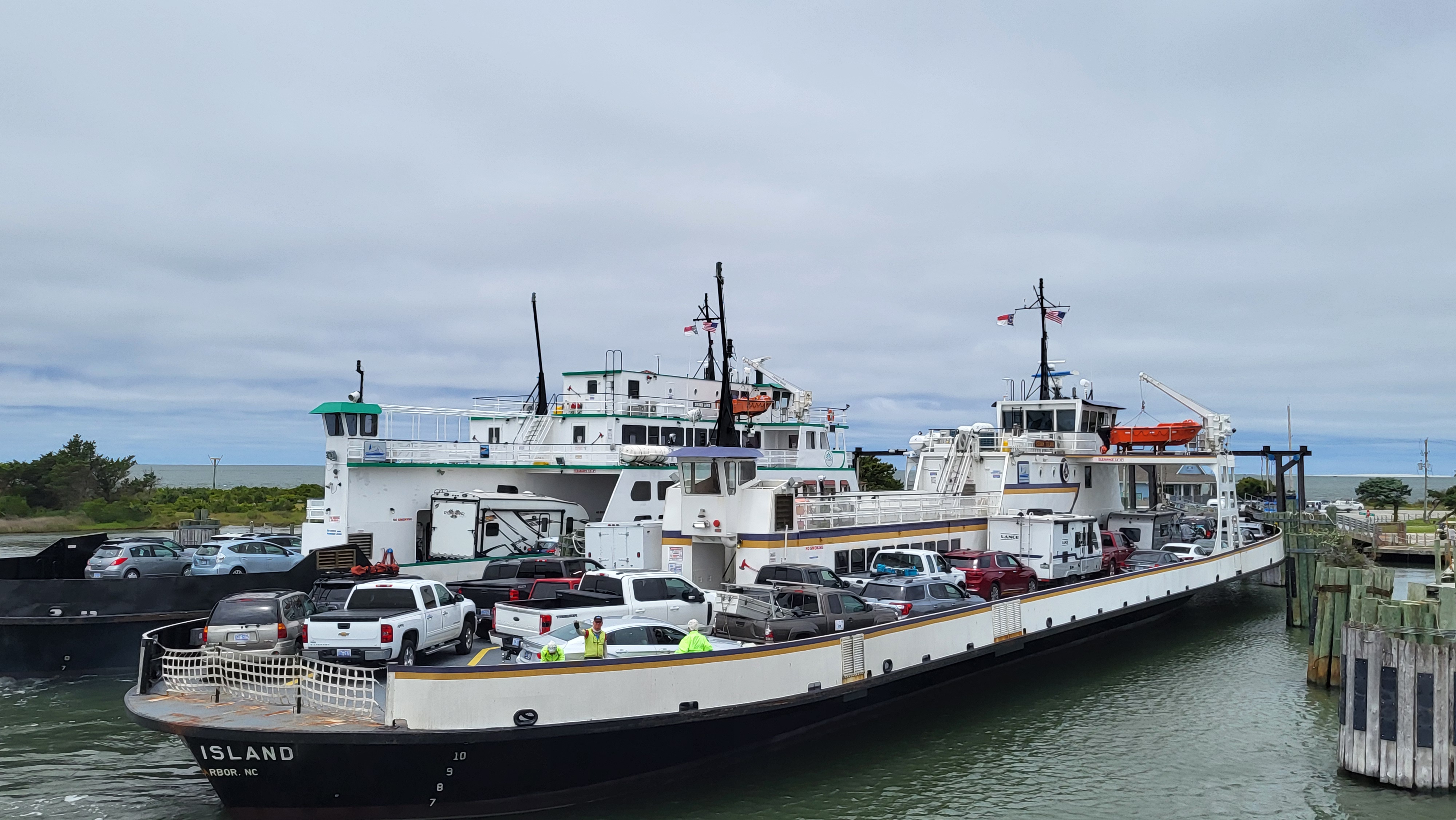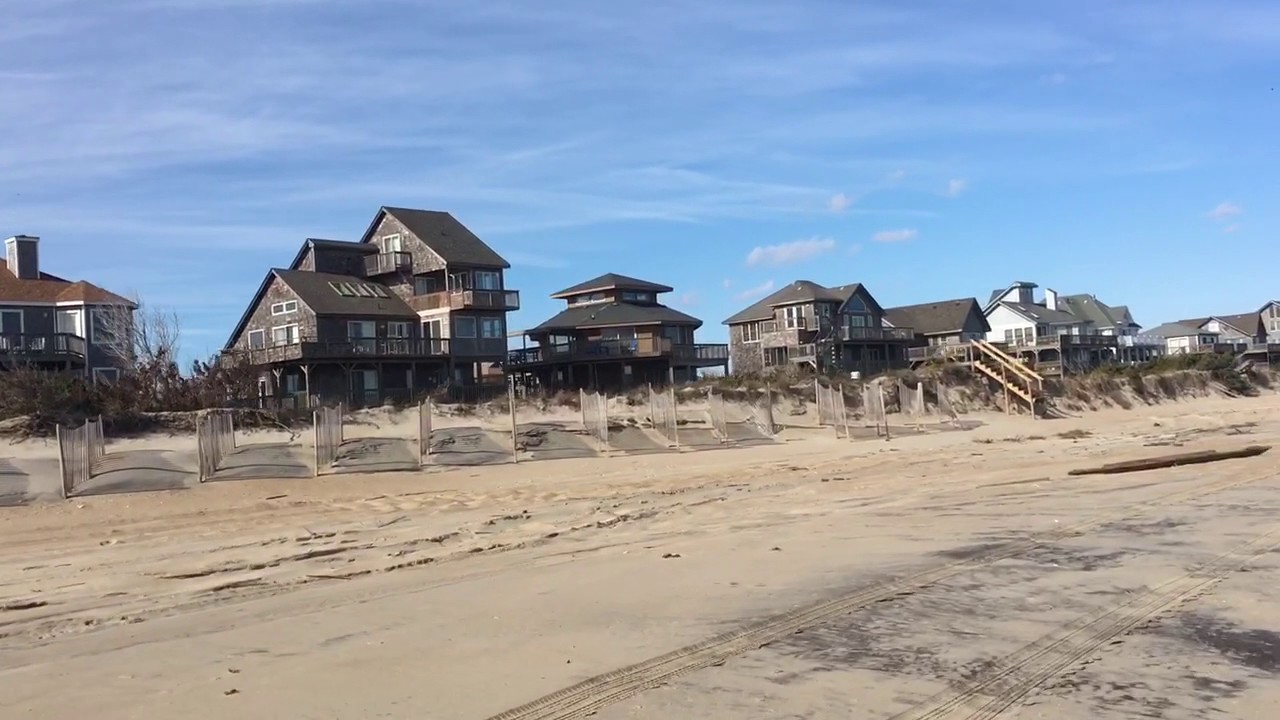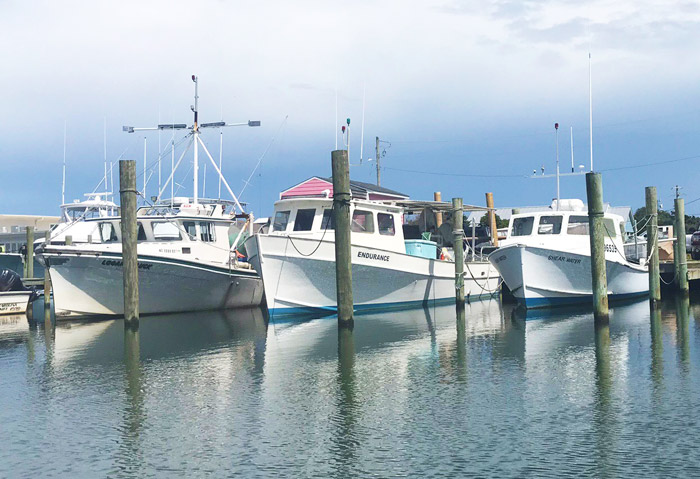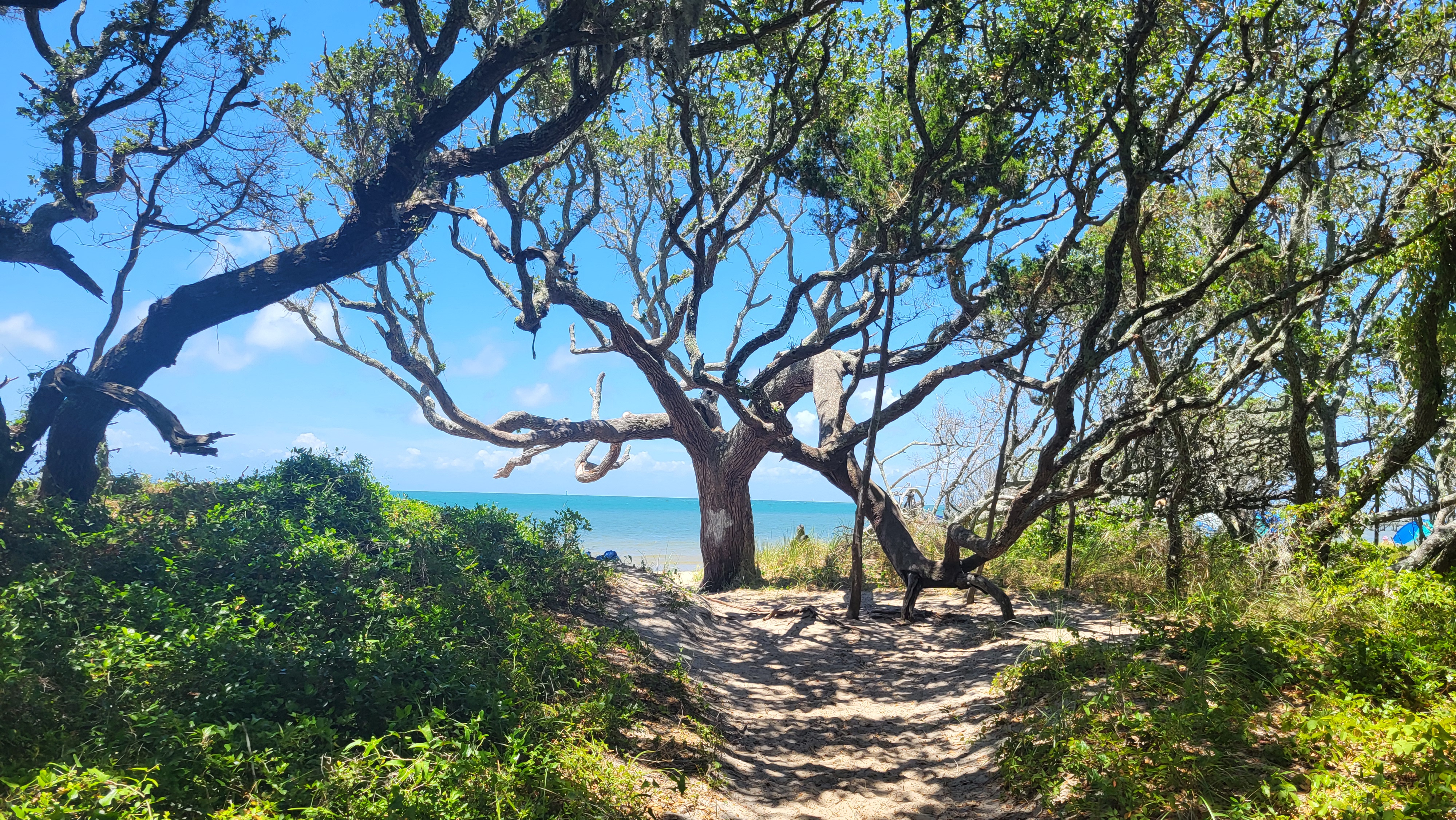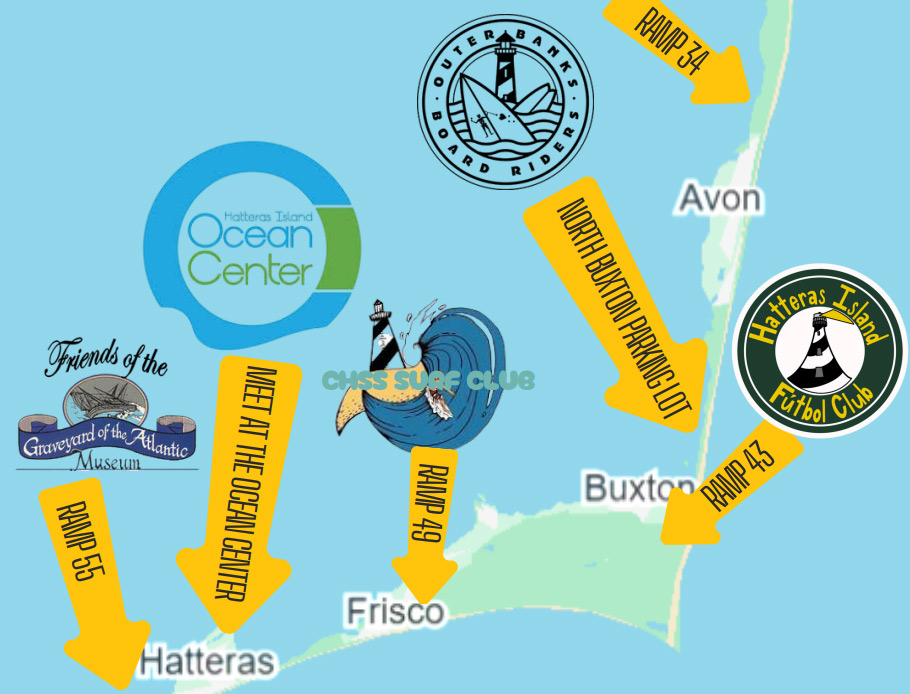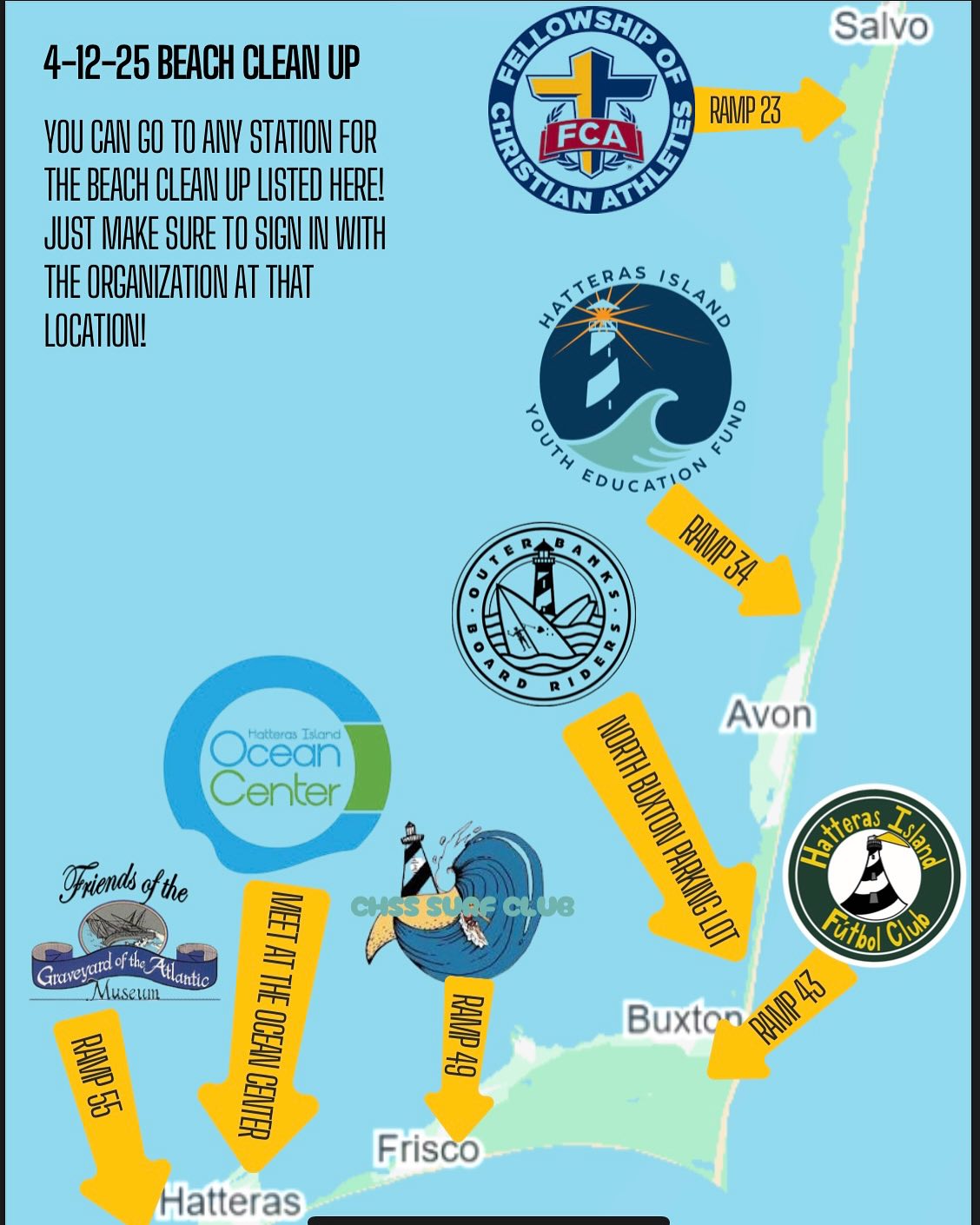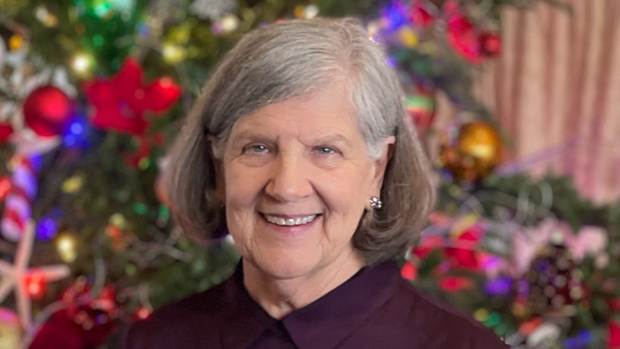Hollerin’ for Christmas! – Celebrating Christmas in a Bygone Era
In the 1930’s, Christmas season on Hatteras Island was the most exciting time of year, rich in traditions and revelry. This was especially true for children as it was the only time of year they would receive a toy.
According to the book, The Kinnakeeter , by Charles T. Williams II, Christmas festivities started well before December 25. Stores were stocked with fireworks, brandy, and apple cider. The noise of fireworks would fill the air day and night.
For a week or two before Christmas, the young people would dress up in unusual clothing and parade through the streets of Kinnakeet, going from home to home and making a great racket. They would cover their heads with black stockings with holes cut out for their eyes and mouth. The eye and mouth openings would be circled with white embroidery, and a long red nose made of flannel was sewed on. Every night they would go on a “gala warpath visiting their neighbors, eating their fresh cooked pies, playing the harmonica, and dancing on their porches,” according to The Kinnakeete r. Everyone would laugh at the young people dancing foolishly in their outrageous costumes at their doorsteps! Some of the younger children would be running at their heels, and the revelers would try to chase them off.
The younger children had their own tradition since they weren’t allowed in the parade. They would get up before daylight and run through the village, banging on huge lard cans that had to be carried by two children. This practice was called “Hollerin’ for Christmas!”
In 1933, a new school building was ready; the old one had been destroyed by a hurricane. According to Stanley E. Green’s book, Kinnakeet Adventure , students showered their teacher with gifts every Christmas. Mr. Green came to Hatteras Island from the western part of North Carolina as a brand new teacher. He was told by Mrs. Keaton, who owned the house he boarded in, about the practice. So he ordered Eversharp pencils, wrapped them with colorful paper and ribbons, to be ready for the last day of school before the holiday.
Students planned a program for Christmas, including carol singing and gift giving. They decorating the school building with crepe paper, cedar and holly, and yaupon with its red berries. The students brought lanterns as the school had no electricity at the time. The night of the program, Mr. Green was amazed at the boisterous singing and celebration. He wrote of his experience, “I felt no place on earth had more good voices than Kinnakeet, and now, as they burst into song, I was absolutely convinced.”
The big event of the season was the Christmas Eve program at the United Methodist Church. Young and old would put on their best clothes, and the children nervously hoped they would not forget the speeches they had memorized. The church would be packed, and the moment would come when all the children and young people marched in. One by one, the younger children were called by name and went forward. Some were shy and forgetful, needing help from their Sunday school teacher; others were boisterous and loud. Then the older children acted out the ancient story of Jesus’ birth. This tradition is still carried out on Christmas Eve.
After the program, all would gather by the church’s Christmas tree to receive their presents. Each family brought gifts to be given out with the rest of the community. My mother said that she can still remember feeling so important when they called her name out – “Stella Scarborough!” – and she would go up and get her gift of a brand new doll. Everyone received a bag of hard candy from the church as well.
On Christmas Eve, the children hung their stockings and awoke to find them filled with a small toy, raisins, candy, and an orange. Goose was prepared for Christmas dinner along with collard greens and sweet potatoes. A great many pies were baked – sweet potato, mincemeat, and pies covered with meringue. I was told that the pies my grandmother made were kept on a board balanced on two chairs in an unheated bedroom.
Hatteras Islanders lived an isolated life in those days. People worked hard and endured the harsh conditions of island living.
They made up for it in their community celebrations, with Christmas being the biggest celebration of all.
To Read More of Rhonda’s Blogs click here.


